How Does the WRMP Advance Regional Goals?
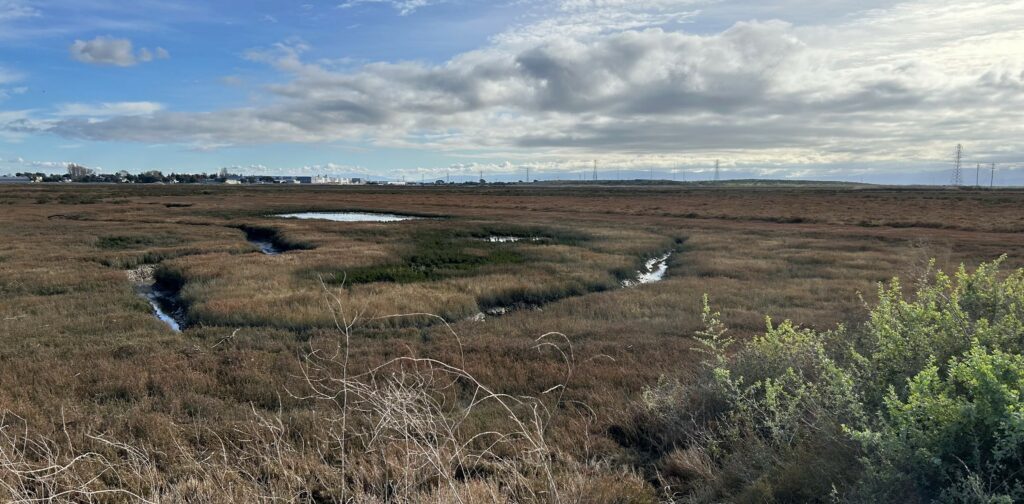
The Wetlands Regional Monitoring Program (WRMP) held a joint Steering Committee-Technical Advisory Committee meeting in April 2024, where committee members brainstormed responses to the prompt: “How do you see the WRMP advancing regional goals?” Committee members used sticky notes on whiteboards to share their answers with the group. Responses fell into the following categories: improving understanding of wetland ecology/restoration techniques through standardized data; reducing the need for project-based regulatory monitoring by reducing uncertainty; measuring progress toward and informing regional goals & priorities; expanding public awareness of wetlands and restoration; enhancing collaboration and learning opportunities; and improving environmental/social equity.
Improving understanding of wetland ecology/restoration techniques through standardized data
The WRMP will be monitoring tidal wetland vegetation, elevation, hydrology, human connections, and more, using standardized methods across the Bay Area. These new data will build on and incorporate existing data, and all data will be available through a public website. Committee members are excited about the WRMP’s efforts to standardize monitoring methods and reporting metrics across the region because it will ultimately create a long-term publicly accessible dataset that others can contribute to, that facilitates comparisons and improves consistency in reporting/communicating about restoration over time.
Here are some of the Committee members’ comments about how the WRMP can advance regional goals by providing standardized, publicly accessible data:

The management and scientific implications of a standardized regional dataset are vast. Management implications include better anticipating climate change impacts, evaluating restoration techniques and designing new pilot techniques, and managing sediment.
Here are some of the Committee members’ comments about the uses of a standardized regional dataset about wetlands:
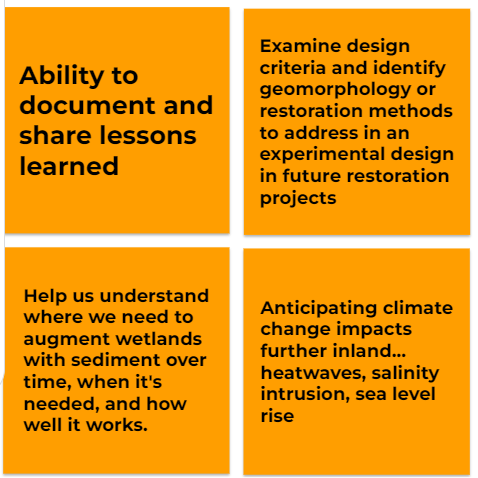
Scientific understanding can also be improved by the WRMP, enabling us to validate conceptual models, understand site-specific data in a regional context, establish regional baselines, and reveal regional and local patterns.
Committee members noted the WRMP’s role:

Reducing the need for project-based regulatory monitoring by reducing uncertainty
The WRMP’s development of a common set of monitoring indicators and metrics, and collection of long-term data outside of restoration projects, can help streamline the permitting process and monitoring required by regulatory agencies. In addition, Committee members were optimistic that improved understanding of restoration evolution and impacts can lead to further reductions in the regulatory monitoring needed for restoration projects.
Committee members commented:
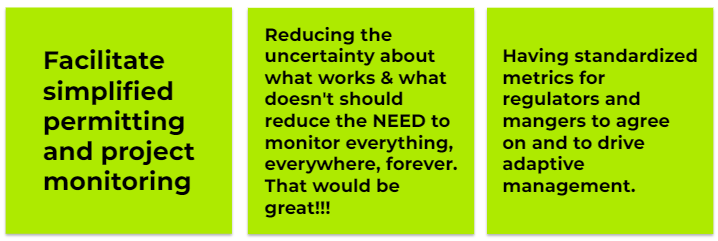
Measuring progress toward and informing regional goals & priorities
Committee members are hopeful the WRMP will be a vehicle for helping the region track progress on meeting existing goals, inform the establishment of new, clear management goals, and identify priorities. As an example, long-term ambient data from the WRMP can support partner agencies like the National Marine Fisheries Service (NMFS) and US Fish and Wildlife Service (USFWS), providing the “connective tissue” that puts other data into context and helps evaluate progress toward recovery of listed species. WRMP Committee members wrote:
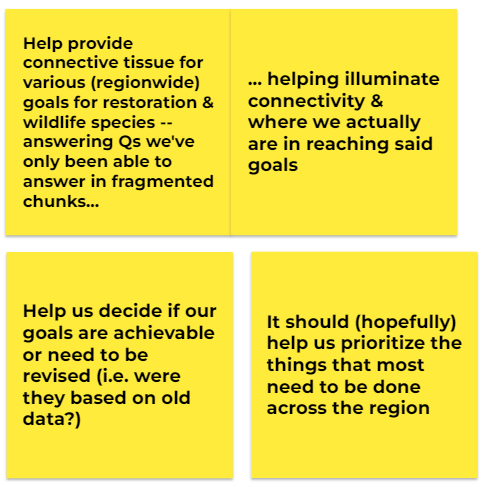
Expanding public awareness of wetlands and restoration
The WRMP will help the wetland restoration and management community communicate about the value of wetlands, progress made on goals and continued regional needs, and climate change impacts like sea level rise. Committee members are particularly excited about the maps and visual resources the WRMP is developing. WRMP Committee members expressed a role for the WRMP in expanding public awareness:
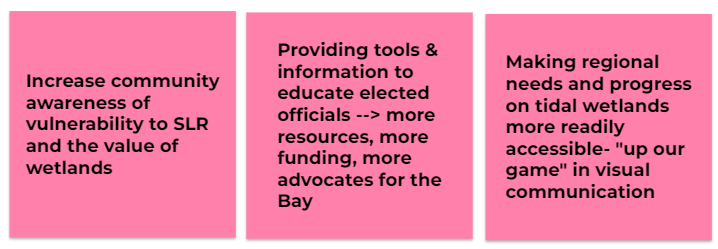
Enhancing collaboration and learning opportunities
Added value of the WRMP comes from its collaborative nature, its focus on cooperation and data sharing, and the way it is developing a monitoring plan that provides opportunities for external collaborators including students to work on WRMP questions.

Improving environmental/social equity
Committee members also recognized the WRMP’s work advancing equity, which includes “bringing more members of the community into this work” (e.g. through committee representation and community-engaged monitoring) and an overarching Equity & Engagement Strategy that outlines ways for the WRMP to contribute to advancing regional equity goals.
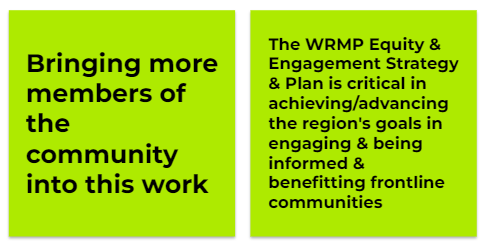
Connect with the WRMP
Join our newsletter to get updates on the WRMP, including release of new monitoring protocols, datasets, and information products. Our existing monitoring protocols (standard operating procedures, “SOPs”) can be found on our Resources page.
